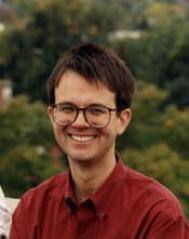Albert Abraham Michelson (surname pronunciation anglicized as "Michael-son", December 19, 1852 – May 9, 1931) was an American physicist known for his work on the measurement of the speed of light and especially for the Michelson–Morley experiment. In 1907 he received the Nobel Prize in Physics. He became the first American to receive the Nobel Prize in sciences.
Biography
Michelson was born in Strzelno, Province of Posen in the Kingdom of Prussia (now Poland) into a Jewish family. He moved to the US with his parents in 1855, at the age of two. He grew up in the mining towns of Murphy's Camp, California and Virginia City, Nevada, where his father was a merchant. Despite his family being Jewish by birth, his family was non-religious. Throughout Michelson's life, he was a lifelong agnostic. He spent his high school years in San Francisco in the home of his aunt, Henriette Levy (née Michelson), who was the mother of author Harriet Lane Levy.
President Ulysses S. Grant awarded Michelson a special appointment to the U.S. Naval Academy in 1869. During his four years as a midshipman at the Academy, Michelson excelled in optics, heat, climatology and drawing. After graduating in 1873 and two years at sea, he returned to the Naval Academy in 1875 to become an instructor in physics and chemistry until 1879. In 1879, he was posted to the Nautical Almanac Office, Washington (part of the United States Naval Observatory), to work with Simon Newcomb. In the following year he obtained leave of absence to continue his studies in Europe. He visited the Universities of Berlin and Heidelberg, and the Collège de France and École Polytechnique in Paris.
In 1877, he married Margaret Hemingway, daughter of a wealthy New York stockbroker and lawyer. They had two sons and a daughter.
Michelson was fascinated with the sciences, and the problem of measuring the speed of light in particular. While at Annapolis, he conducted his first experiments of the speed of light, as part of a class demonstration in 1877. His Annapolis experiment was refined, and in 1879, he measured the speed of light in air to be 299,864±51 kilometres per second, and estimated the speed of light in vacuum as 299,940 km/s, or 186,380 mi/s. After two years of studies in Europe, he resigned from the Navy in 1881. In 1883 he accepted a position as professor of physics at the Case School of Applied Science in Cleveland, Ohio and concentrated on developing an improved interferometer. In 1887 he and Edward Morley carried out the famous Michelson–Morley experiment which seemed to rule out the existence of the aether. He later moved on to use astronomical interferometers in the measurement of stellar diameters and in measuring the separations of binary stars.
In 1889 Michelson became a professor at Clark University at Worcester, Massachusetts and in 1892 was appointed professor and the first head of the department of physics at the newly organized University of Chicago.
In 1899, he married Edna Stanton. They raised one son and three daughters.
In 1907, Michelson had the honor of being the first American to receive a Nobel Prize in Physics "for his optical precision instruments and the spectroscopic and metrological investigations carried out with their aid". He also won the Copley Medal in 1907, the Henry Draper Medal in 1916 and the Gold Medal of the Royal Astronomical Society in 1923. A crater on the Moon is named after him.
Michelson died in Pasadena, California at the age of 78. The University of Chicago Residence Halls remembered Michelson and his achievements by dedicating 'Michelson House' in his honor. Case Western Reserve has dedicated a Michelson House to him, and Michelson Hall (an academic building of science classrooms, laboratories and offices) at the United States Naval Academy also bears his name. Clark University named a theatre after him. Michelson Laboratory at Naval Air Weapons Station China Lake in Ridgecrest, California is named for him. There is a display in the publicly accessible area of the Lab which includes facsimiles of Michelson's Nobel Prize medal, the prize document, and examples of his diffraction gratings.

